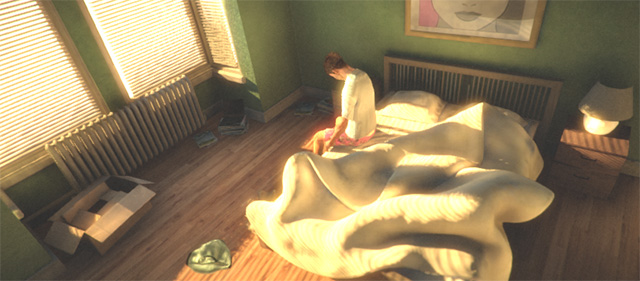- Unity User Manual 2020.2
- Графика
- Advanced rendering features
- High dynamic range
High dynamic range
High dynamic range (HDR) is a technique that produces images with a greater dynamic range of luminosity than standard dynamic range (SDR) images, allowing for realistic depictions of color and brightness.
How HDR works
In standard rendering, the red, green, and blue values of a pixel are stored using an 8-bit value between 0 and 1, where 0 represents zero intensity and 1 represents the maximum intensity for the display device. This limited range of values doesn’t accurately reflect the way that we perceive light in real life and leads to unrealistic images when very bright or very dark elements are present.
In HDR rendering, the pixel values are stored using floating point numbers. This allows for a much larger range of values, which more accurately represents the way that the human eye perceives color and brightness.
HDR in Unity
In Unity, you can use HDR images for internal rendering calculations. This feature is called HDR rendering. When HDR rendering is enabled, Unity renders the scene to an HDR image buffer, and performs rendering operations, such as post-processing effects, using that HDR image. This means that the calculations are carried out using realistic values, which can lead to more realistic results.
On certain compatible platforms, Unity supports sending that HDR image to the display device. This feature is called HDR output.
Advantages of using HDR
- Colors are not lost in high intensity areas
- Лучшая поддержка блума и свечения (glow).
- Снижение banding-артефактов в областях с низкочастотным освещением
Disadvantages of using HDR
- Increased VRAM usage
- Additional computational cost of tonemapping, when used
- Hardware anti-aliasing is not compatible with HDR rendering
Render pipeline compatibility
| Render pipeline | HDR rendering | HDR output |
|---|---|---|
| Built-in Render Pipeline | Yes Enable HDR rendering per-Camera in the Inspector, or using the Camera.allowHDR API. Enable HDR rendering and configure the format of the HDR buffer for each tier in the Graphics settings window. |
Yes Use the HDROutputSettings API to configure HDR output options. See platform-specific documentation for further details. |
| Universal Render Pipeline (URP) | Yes Enable HDR rendering per-Camera in the Inspector or using the Camera.allowHDR API. Enable HDR rendering for all Cameras using the Universal Render Pipeline Asset. |
In research The development team are researching how to implement this feature. It does not yet have a planned release date. |
| High Definition Render Pipeline (HDRP) | Yes HDR rendering is enabled for all Cameras by default. You cannot disable it. |
In research The development team are researching how to implement this feature. It does not yet have a planned release date. |
Tonemapping
Tonemapping is the process of mapping color values from one range to another. When working with HDR, you must use tonemapping to convert the colors in the HDR image buffer so that the values are within a range that your display device can handle. If you do not use tonemapping, you can lose much of the detail and color information from the image, especially in very bright areas.


When using HDR rendering with SDR output, you must use tonemapping to convert the HDR image buffer to an SDR image for display. Unity provides tonemapping post-processing effects that let you do this: the Post-Processing Stack V2 package, the URP integrated post-processing solution, and HDRP integrated post-processing solution all contain tonemapping effects.
When using HDR rendering with HDR output, you can either:
- Create your own tonemapping solution that converts the HDR image buffer directly to a compatible HDR format for display
- Use Unity’s tonemapping post-processing effects to convert the HDR buffer to an SDR image (as above), and then use Unity’s automatic output tonemapping to convert that SDR image to a suitable output format. For more details of Unity’s automatic output tonemapping, see the documentation for HDROutputSettings.automaticHDRTonemapping.
Using HDR rendering in the Built-in Render Pipeline
In the Forward rendering path, a Camera only supports HDR if you have a post-processing effect on the Camera. This is due to performance considerations. If you have no post-processing effect on the Camera, the scene will be rendered directly to the back buffer where HDR is not supported.
In the Deferred Shading rendering path, when HDR is enabled for a Camera the lighting buffer is also allocated as a floating point buffer. This reduces banding in the lighting buffer.
- HDROutputSettings API added in 2020.1 NewIn20201